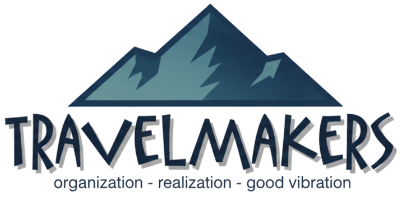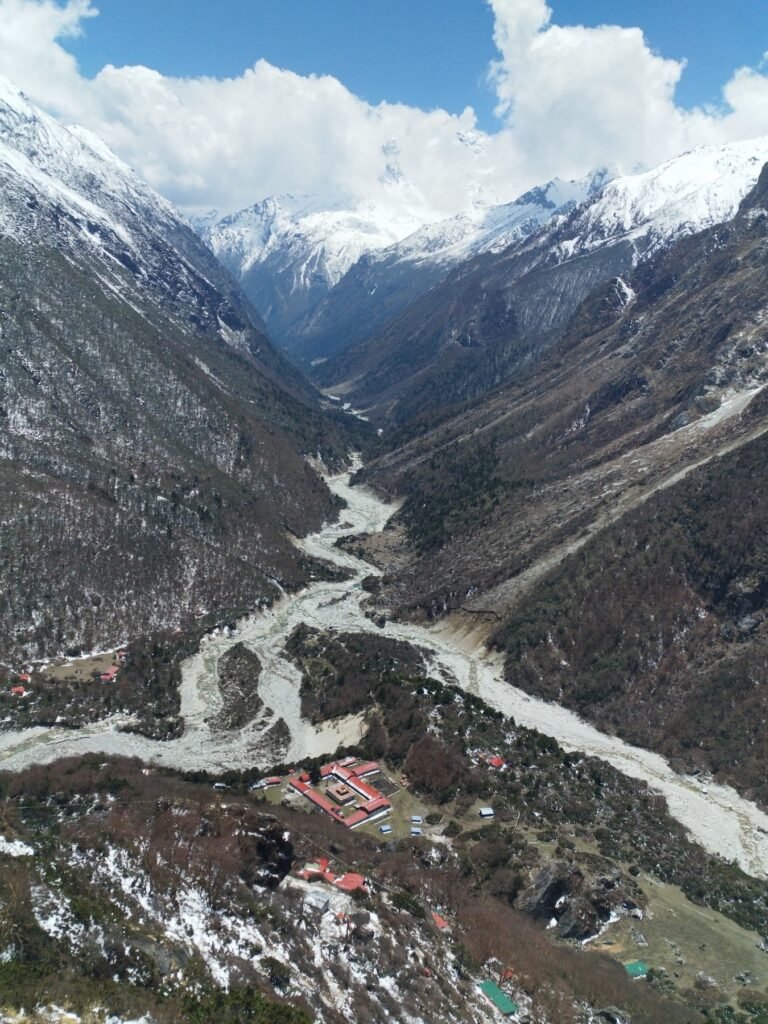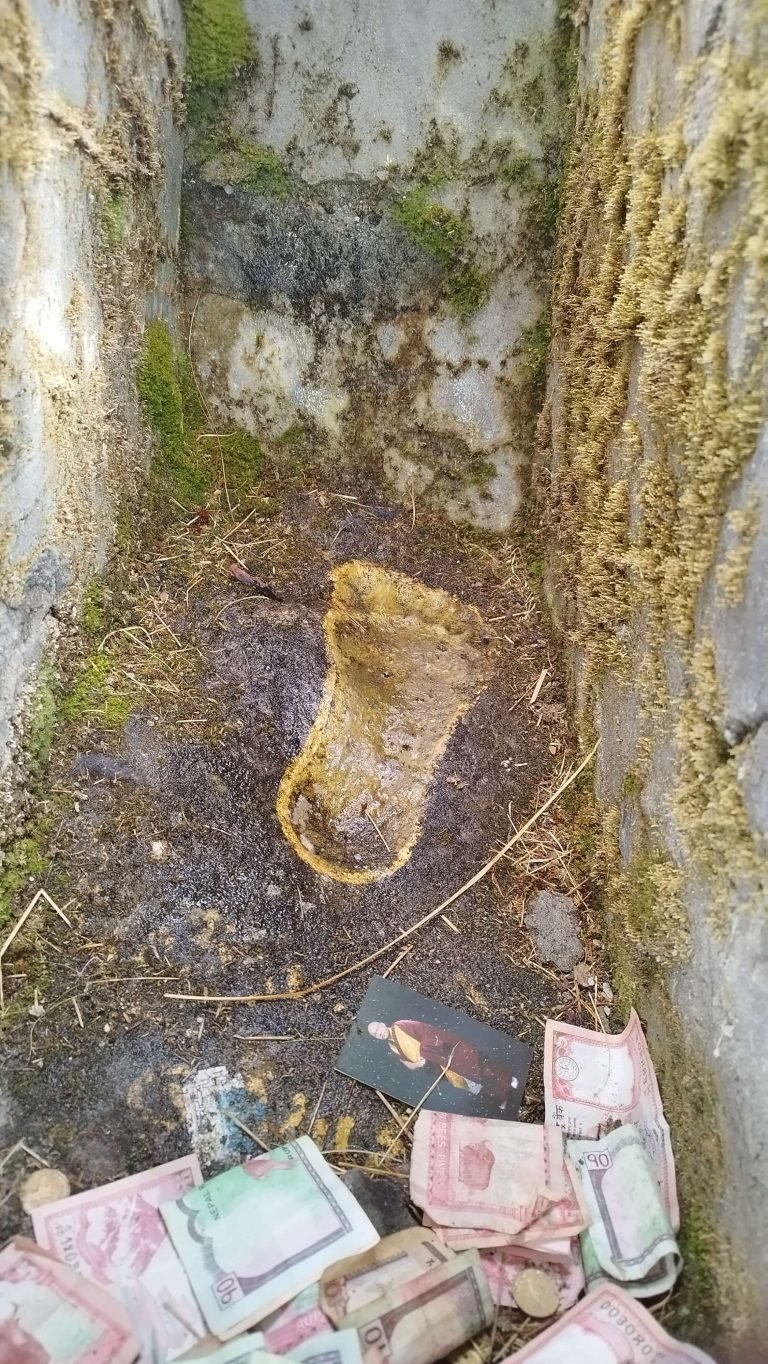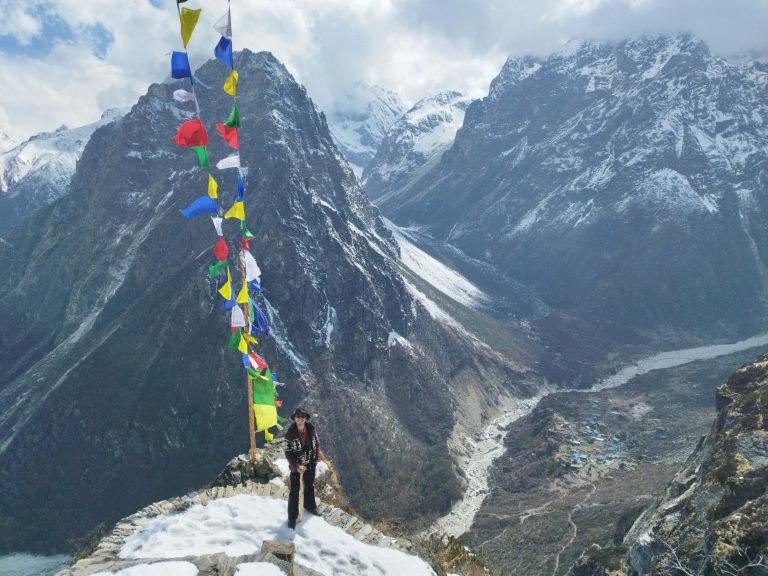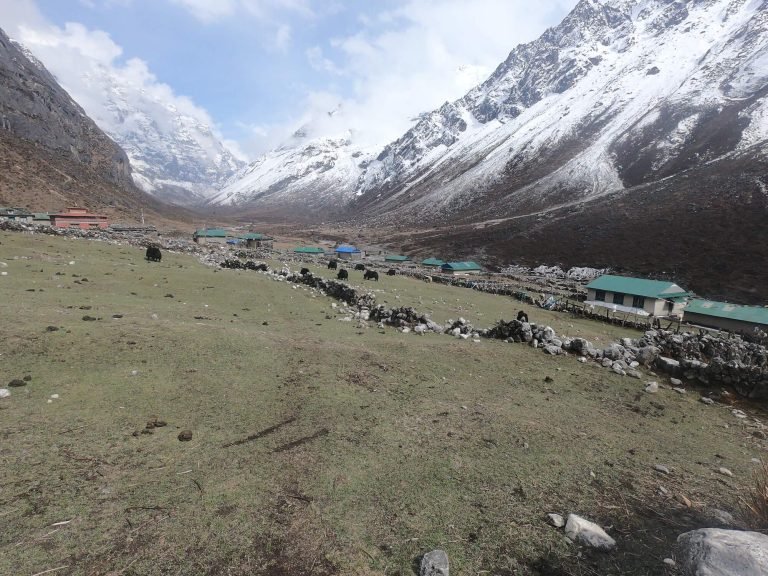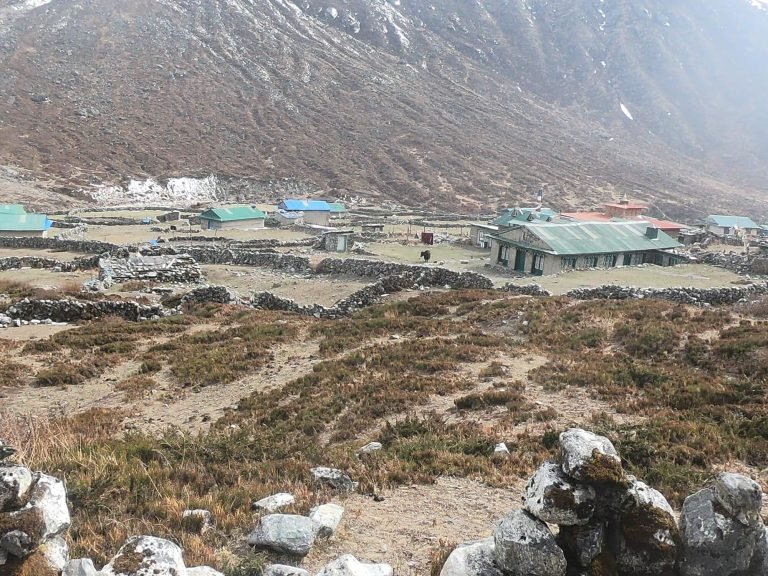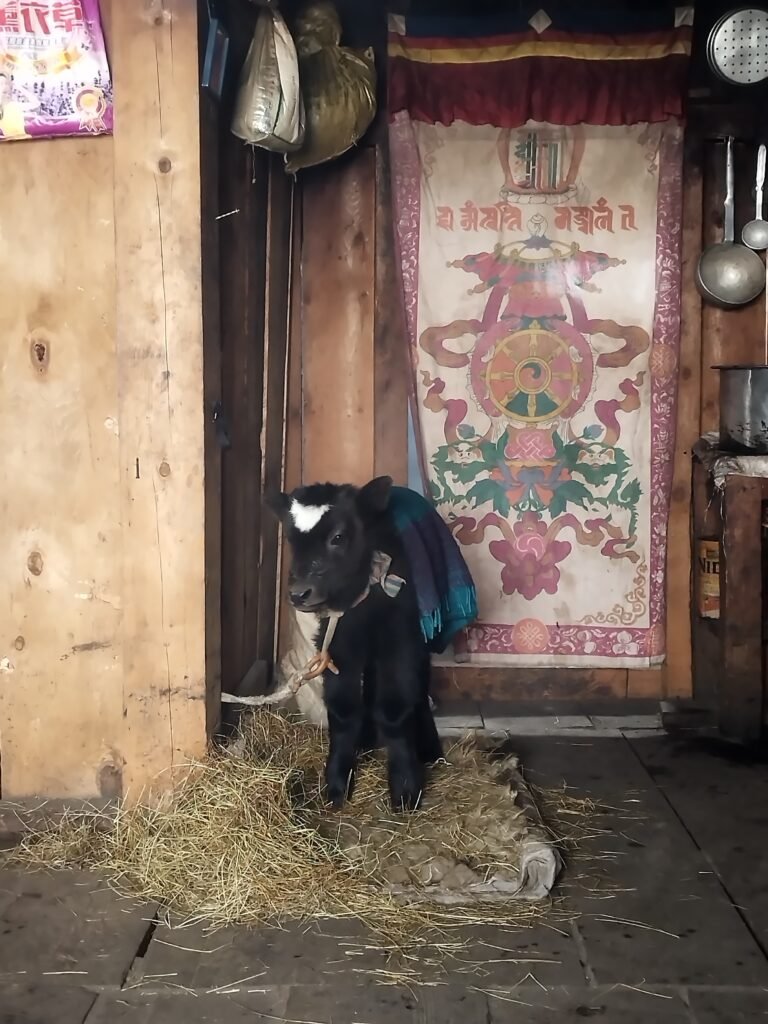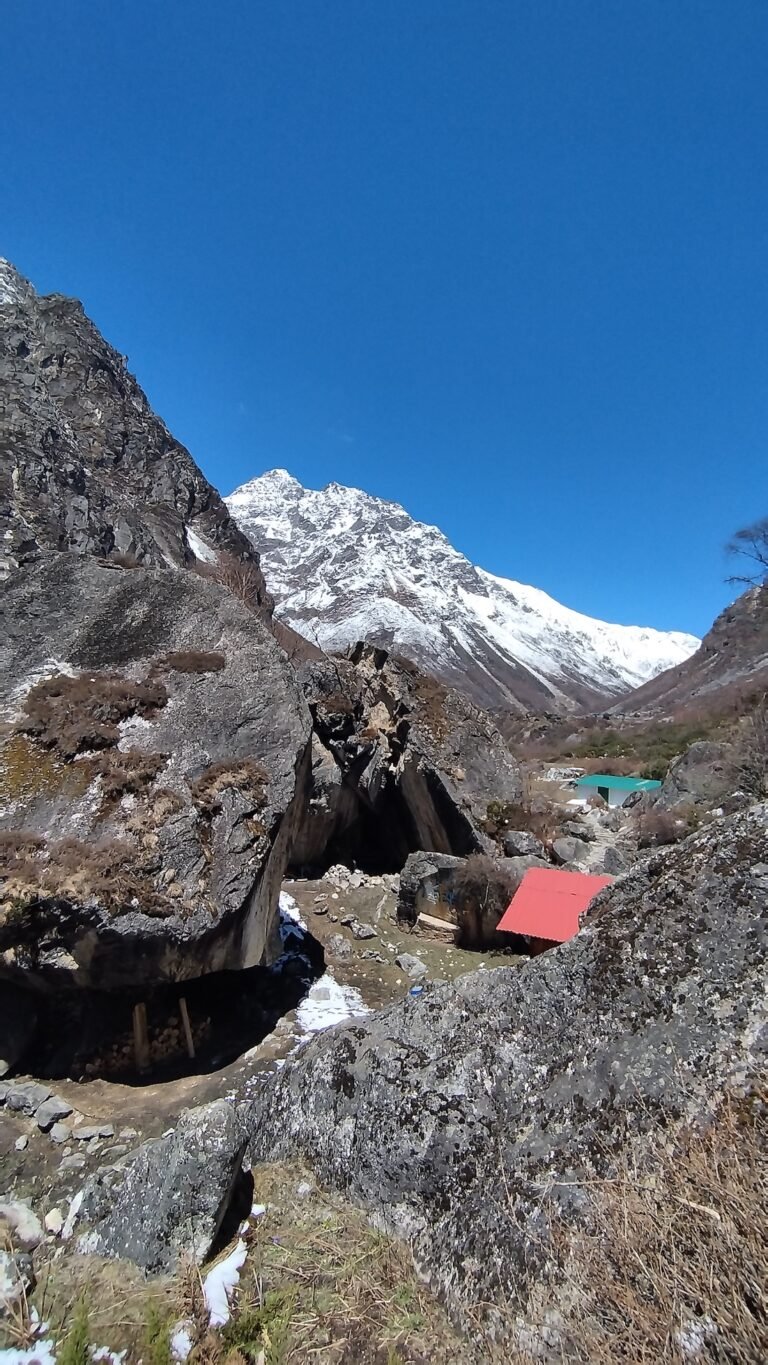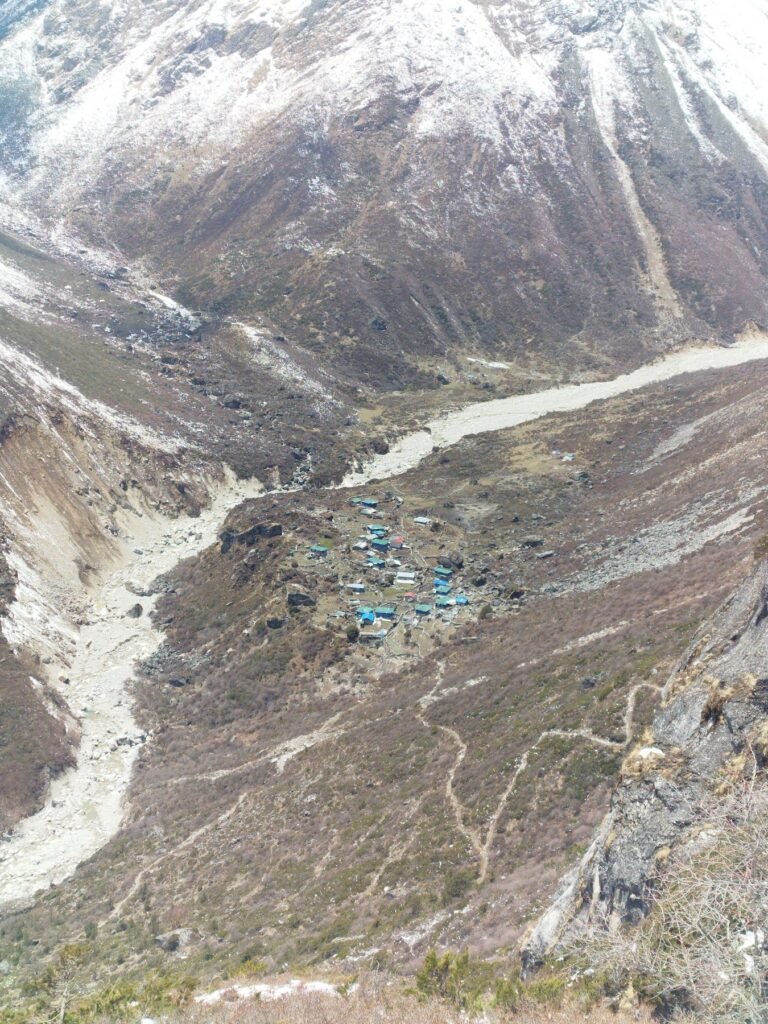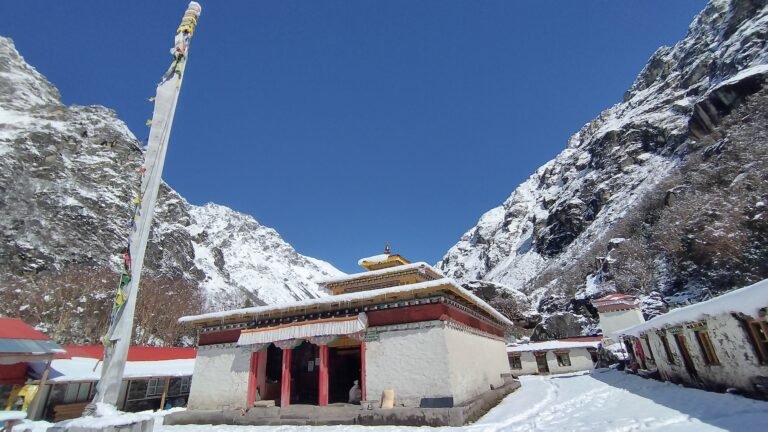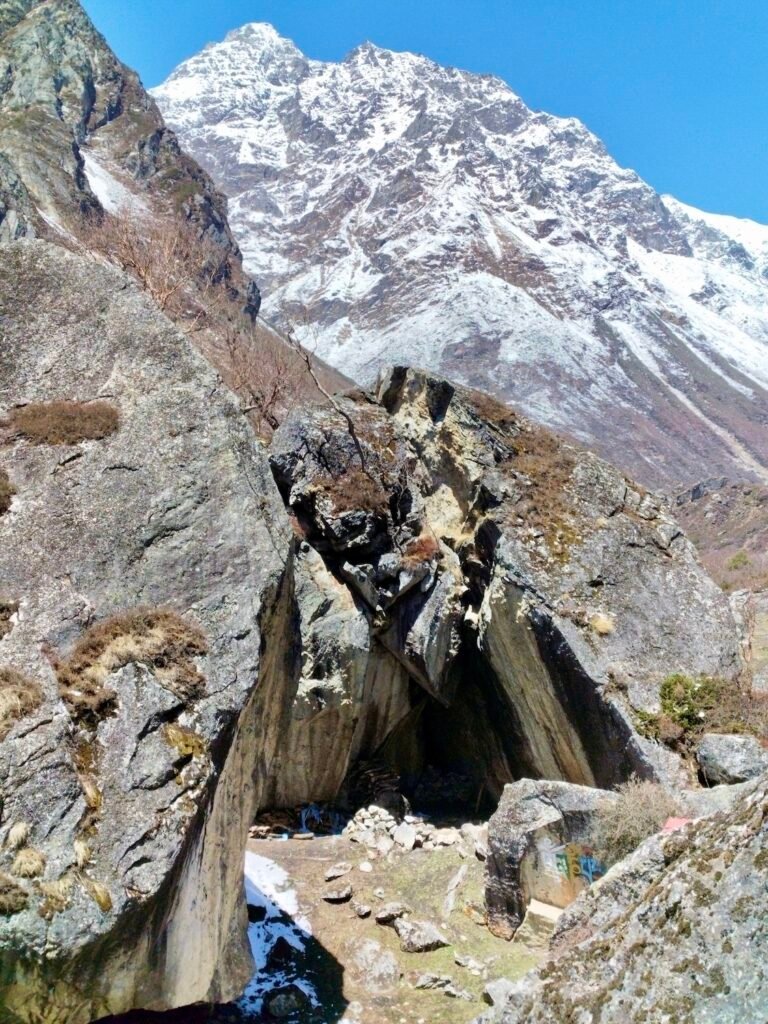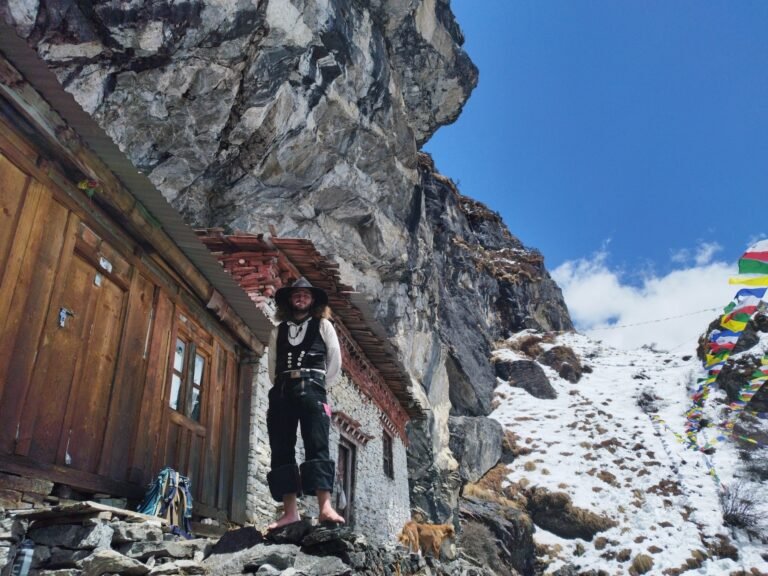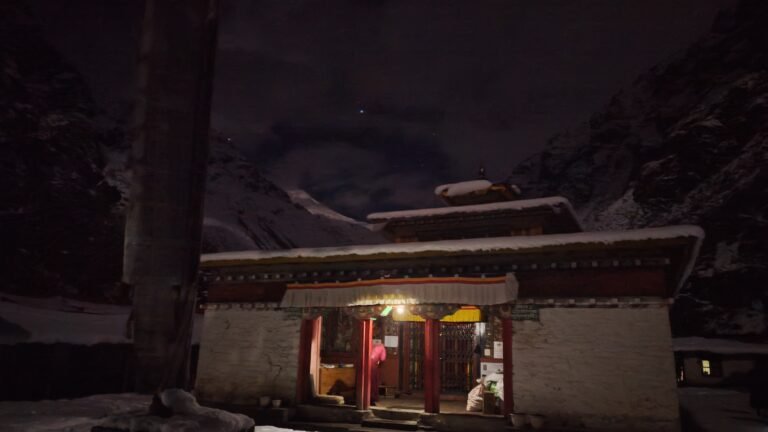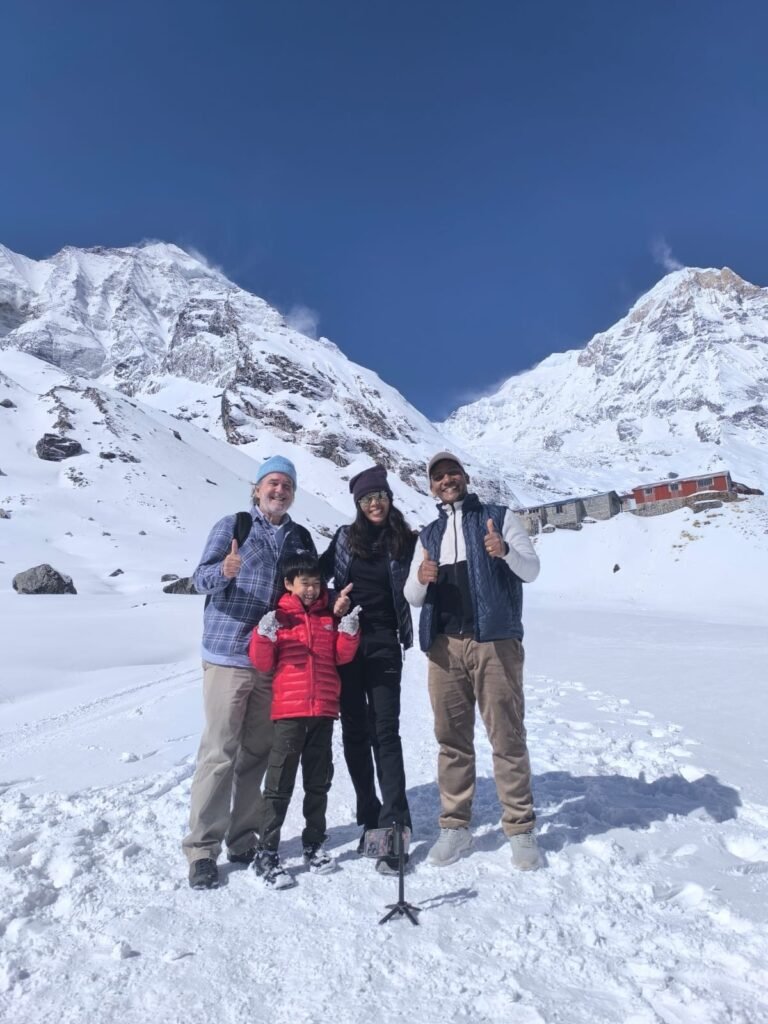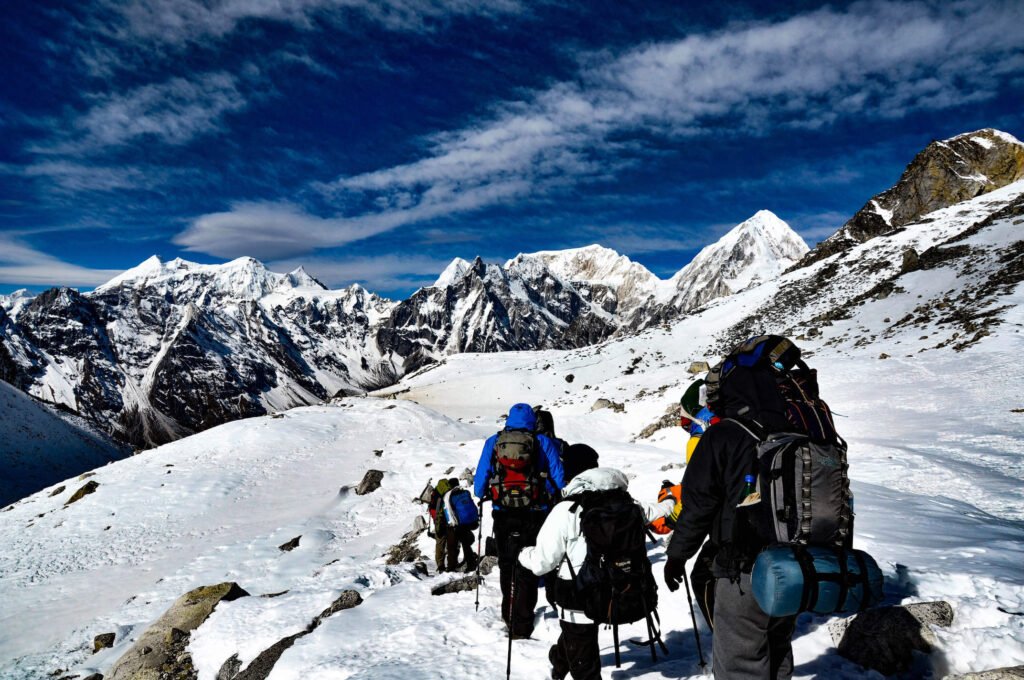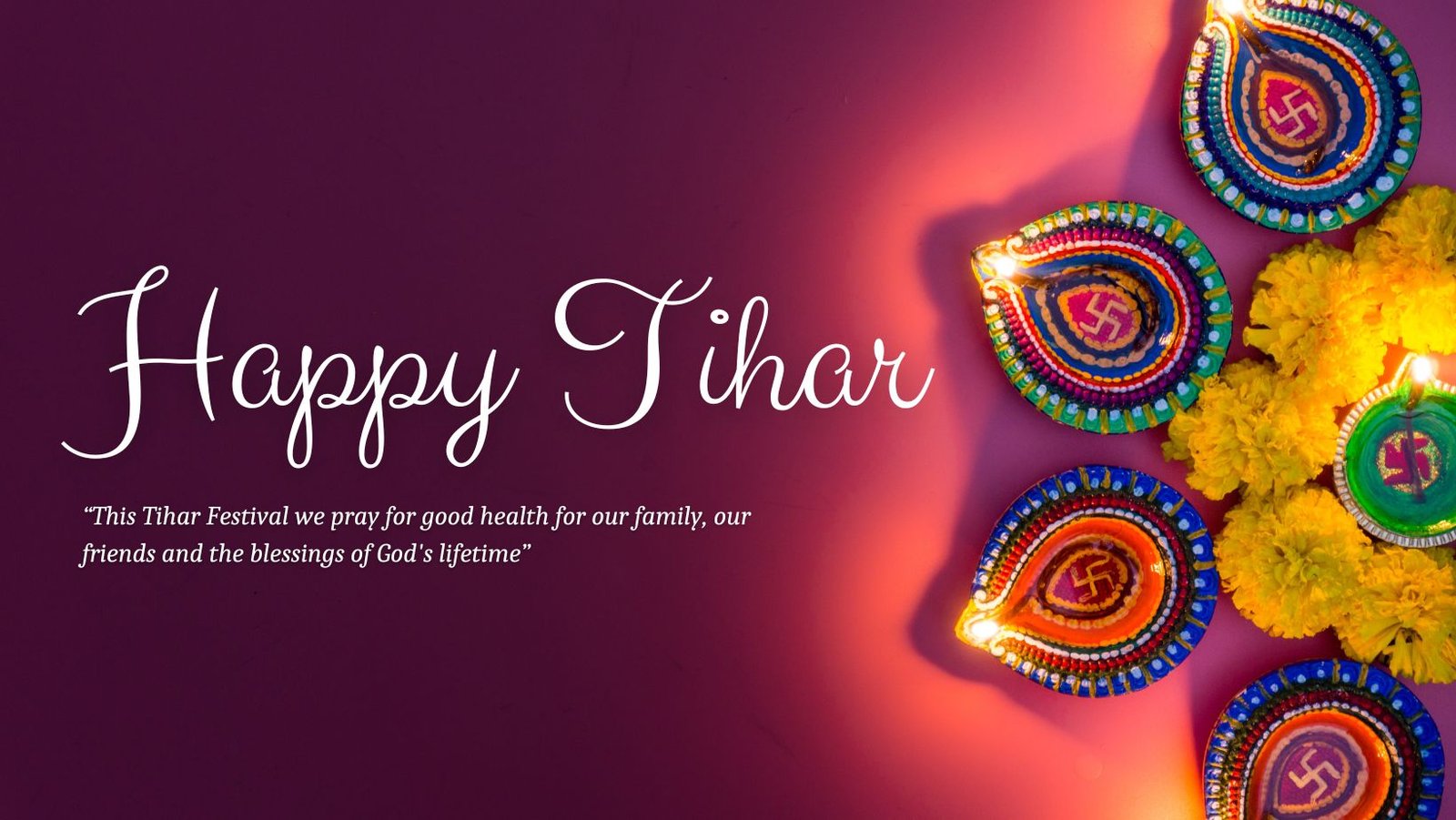- Overview
- Trip Outline
- Trip Includes
- Trip Excludes
- Gallery
- FAQ
Embark on "Milarepa's Footsteps: The Sacred Lapchi Expedition."
Trace the spiritual paths once roamed by the legendary Milarepa.
Discover Lapchi, a pilgrimage jewel nestled in the heart of the Himalayas.
Venture to the edge, where Nepal meets the mystique of the Tibet border.
Experience the serenity of untouched trails, resonating with ancient chants.
Engage with timeless traditions, meeting monks and locals preserving an age-old culture.
Witness breathtaking vistas, where snow-capped peaks kiss the azure sky.
Dive deep into a journey where history, nature, and spirituality converge.
Begin in bustling Kathmandu, where ancient traditions meet modern life.
Set forth towards Simi Gaun, opening the gateway to the Himalayan heartland.
Trek through remote villages, each step echoing with stories of ages past.
Ascend to Beding and Na, where nature's majesty surrounds you in panoramic splendor.
Witness the shimmering beauty of Tsho-Rolpa, the longest glacier lake.
Journey through Kyalchey and Chhetchhet, places where time seems to stand still.
Reach the sacred grounds of Labchi, footsteps away from the mystical Tibet border.
Relive the spiritual legacy of Milarepa, whose tales are whispered by the winds.
Descend back, carrying memories of a land where spirituality and beauty intertwine.
End with a soulful return to Kathmandu, the expedition's tales etched in your heart forever.
Itineraries
Day 1
Kathmandu to Simi Gaun via Chhetchhet
Distance: 70 km
Max Altitude: 2000m
Depart from Kathmandu and drive to Chhetchhet. Begin the trek to Simi Gaun.
Overnight: Trekking lodge in Simi Gaun.
Day 2
Simi Gaun to Chusa
Distance: 12 km
Max Altitude: 2500m
Trek to Chusa, passing through small villages.
Overnight: Local lodge in Chusa.
Day 3
Chusa to Chotar
Distance: 10 km
Max Altitude: 3000m
Trek amid scenic forests, arriving at Chotar.
Overnight: Guesthouse in Chotar.
Day 4
Chotar to Beding
Distance: 14 km
Max Altitude: 3700m
Journey to Beding, exploring remote areas along the way.
Overnight: Homestay or local lodge.
Day 5
Rest Day in Beding
Explore Beding or relax.
Overnight in Beding.
Day 6
Beding to Na
Distance: 11 km
Max Altitude: 4100m
Trek to Na, experiencing the majestic landscapes.
Day 7
Day Trip to Tsho-Rolpa
Distance: 8 km (Round trip)
Max Altitude: 4580m
Trek to Tsho-Rolpa and back to Na.
Day 8
Na to Kyalchey
Distance: 13 km
Max Altitude: 4200m
Journey to Kyalchey.
Overnight: Guesthouse in Kyalchey.
Day 9
Kyalchey to Chhetchhet
Distance: 12 km
Max Altitude: 3500m
Traverse forests and hills, arriving at Chhetchhet.
Overnight in Chhetchhet.
Day 10
Chhetchhet to Lamabagar
Distance: 10 km
Max Altitude: 4000m
Trek to Lamabagar.
Overnight: Local accommodation.
Day 11
Lamabagar to Lumlan
Distance: 12 km
Max Altitude: 4300m
Continue to Lumlan.
Overnight: Homestay or local lodge.
Day 12
Lumlan to Lapche (Tibet Border)
Distance: 11 km
Max Altitude: 4650m
Trek to Lapche, near the Tibet border.
Overnight: Guesthouse in Lapche.
Day 13
Lapche to Lumlan
Distance: 11 km
Max Altitude: 4300m
Return trek to Lumlan.
Overnight in Lumlan.
Day 14
Lumlan to Lamabagar
Distance: 12 km
Max Altitude: 4000m
Trek back to Lamabagar.
Overnight in Lamabagar.
Day 15
Lamabagar to Kathmandu
Distance: 210 km (Drive)
Drive back to Kathmandu.
Overnight: Shangri-La Boutique Hotel (Bed and Breakfast).
- Professional Guide: An experienced guide knowledgeable about the region and trekking routes.
- Accommodation: Lodges, guesthouses, and potential homestays during the trek.
- Meals: Breakfast, lunch, and dinner during the trek.
- Transportation: All transportation as per the itinerary, including transfers to and from trek starting points.
- Trekking Permits: All necessary permits required for the trek.
- Entry Fees: Any applicable national park or conservation area fees.
- Porter Services: If applicable, to help carry your luggage. (Optional)
- Basic First Aid Kit: Including basic medicines and bandages.
- Map: A detailed trekking map.
- International Airfare: Flights to and from Nepal.
- Travel Insurance: Essential for emergencies and evacuations.
- Personal Expenses: Such as souvenirs, extra snacks, phone bills, battery charging, and showers.
- Beverages: Both alcoholic and non-alcoholic.
- Tips & Gratuities: For guides, porters, and other service providers.
- Extra Accommodation: In case you arrive early or depart late, extra nights in Kathmandu.
- Optional Activities: Any activities not specified in the itinerary.
- Gear and Equipment: Trekking boots, clothing, backpacks, and other personal gear.
- Visa Fees: If applicable for your nationality.
- Emergency Evacuation: Costs associated with medical or emergency evacuations.
Yes — a guide is highly recommended because the trail is remote, poorly marked in parts, and local knowledge helps with safety and navigation.
You’ll need the Gaurishankar Conservation Area permit (or special restricted area permit) as well as TIMS (Trekkers’ Information Management System).
Spring (March–May) and Autumn (September–November) are ideal — stable weather, clear skies, and low risk of rain or snowfall.
It is moderate to challenging: not highly technical, but steep stretches, high altitude, remote terrain, and long hiking days make it demanding.
Depending on the route, altitudes can reach about 4,850 m at Lapchi Kang, or around 4,900 m in some itineraries.
It’s not strictly required, but having some trekking experience, endurance, and good fitness will greatly improve your comfort and safety.
Basic lodges, teahouses, and homestays are available. Facilities are modest — expect limited hot water, shared bathrooms, and minimal luxury.
Yes — altitude sickness is possible. The best prevention is gradual ascent, staying well-hydrated, resting when needed, and listening to your body.
Very limited. Most parts of the trail have no mobile network; Wi-Fi is rare. Be prepared for digital disconnection.
Yes — many trekking providers allow customizing the itinerary, side treks, rest days, or altering routes to suit preferences.
Essential items include sturdy trekking boots, layered warm clothing, sleeping bag, rain protection, first-aid kit, water purification, and power banks.
